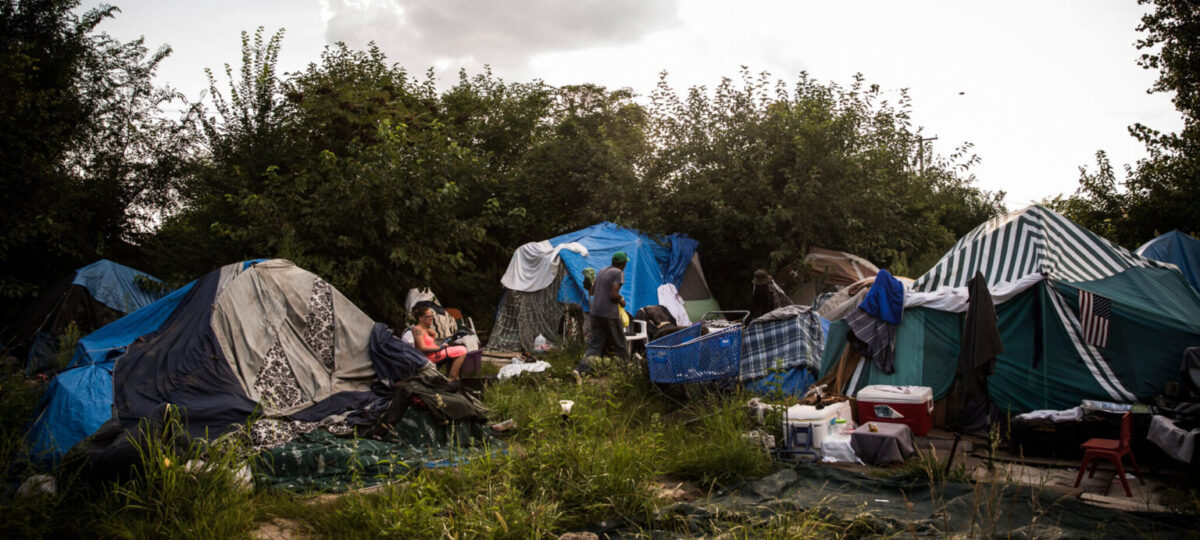Homelessness continues climbing, new annual count shows
Homelessness in New Jersey has climbed 24% since last year, a trend advocates attributed to an entrenched affordable housing shortage made worse by rising rents and shrinking vacancies.
Advocates counted 12,680 people — representing 9,148 households — who were living in shelters, hotels and motels, safe-haven programs, transitional housing, and on the street during their annual assessment, which was done this year on Jan. 23. That’s about 2,400 more than they counted last year and continues an upward swing that started in 2021.
More children are experiencing homelessness, too, with advocates documenting a 14% jump in the number of homeless families with kids under 18, said Kasey Vienckowski of Monarch Housing Associates, the nonprofit that reports the count annually.
“The continued increase highlights the critical need for more affordable housing in our communities,” she said.
Data shows a decrease in vacancy rates for rentals statewide, dropping from 3.7% in 2022 to 3.1% last year, Vienckowski added.
“This creates a crisis for persons in the state with low or very-low incomes, making it incredibly difficult to find and secure affordable housing,” she said.
Vienckowski and other advocates called on lawmakers to address this problem. Reports show the state is about 224,000 units short of what it needs to ensure safe, affordable housing for its poorest residents.
Monarch’s report, which was released Tuesday, also found that:
• 86% of those counted, or 10,943 people, lived in sheltered locations like motels, emergency shelters, and transitional housing.
• 14%, or 1,737 people, lived on the street or in unsheltered locations. The number of unsheltered people rose 23% from the previous year.
• 35% of homeless households had no source of income.
• 36% were homeless families with at least one child under age 18. Advocates also counted 31 unaccompanied youth under 18 who were homeless.
• 30% had been homeless for at least one year, while 16% were considered chronically homeless.
• Several demographics were disproportionately represented. Forty-nine percent were Black, even though Black people represent just 12% of the state’s population; 46% reported at least one disability, such as a mental health disorder, addiction, or chronic health condition; 15% were veterans; and 12% were victims of domestic violence.
• The counties with the most unhoused people were Essex (19%), Hudson (9%), Burlington and Union (8% each), Mercer (7%), and Camden and Passaic (6% each).
The annual count, known as the “point in time count,” is required by the U.S. Department of Housing and Urban Development to secure federal funding for programs serving unhoused people. County and local government workers, social service providers, community advocates, and volunteers conduct the counts in each county by surveying unhoused people and examining information in a database of unhoused people. The reports that Monarch then issues are intended for policymakers to develop strategies to end homelessness.
Advocates already have some ideas for that. Evictions and “soft” evictions — such as people being asked to leave a shared residence — are increasingly contributing to homelessness, said Mike Callahan, director of the state Department of Community Affairs’ office of homelessness prevention.
“These numbers underscore the urgent need for stronger tenant protections, expanded prevention programs driven by real-time data, and more robust early intervention strategies,” Callahan said. “By focusing on prevention and addressing the root causes of housing instability, we can work to stem the tide of homelessness before it begins and provide more stable futures for vulnerable New Jerseyans.”
Affordable housing activists also have pushed for protections for unsheltered people — advocacy that has grown especially urgent since June, when the U.S. Supreme Court gave local governments the green-light to punish people for sleeping or camping in public spaces.
That ruling arose from a Grants Pass, Oregon, ordinance that banned homeless people from camping in public spaces and allowed police to arrest and fine violators. Policymakers in towns across the U.S. and in New Jersey, including Atlantic City and Millville, proposed similar bans.
Monarch and other advocacy groups have lobbied the governor to issue an executive order that would ban such ordinances, Vienckowski said.
“There’s definitely some huge concerns surrounding the criminalization of unsheltered homelessness,” she said.
Arresting and fining unhoused people for sleeping or camping in public would create more barriers to getting unhoused people into permanent, stable housing — and possibly have the unintended effect of increasing homelessness further, she said.
“Now you’re going to have folks that have increased financial issues due to unnecessary fines, and this will come up on their criminal background checks, which will create issues around getting landlords to approve their applications”, Vienckowski said. “I do think there could be potential implications in the 2025 point in time count.”
Next year’s count is set for Jan. 29.


